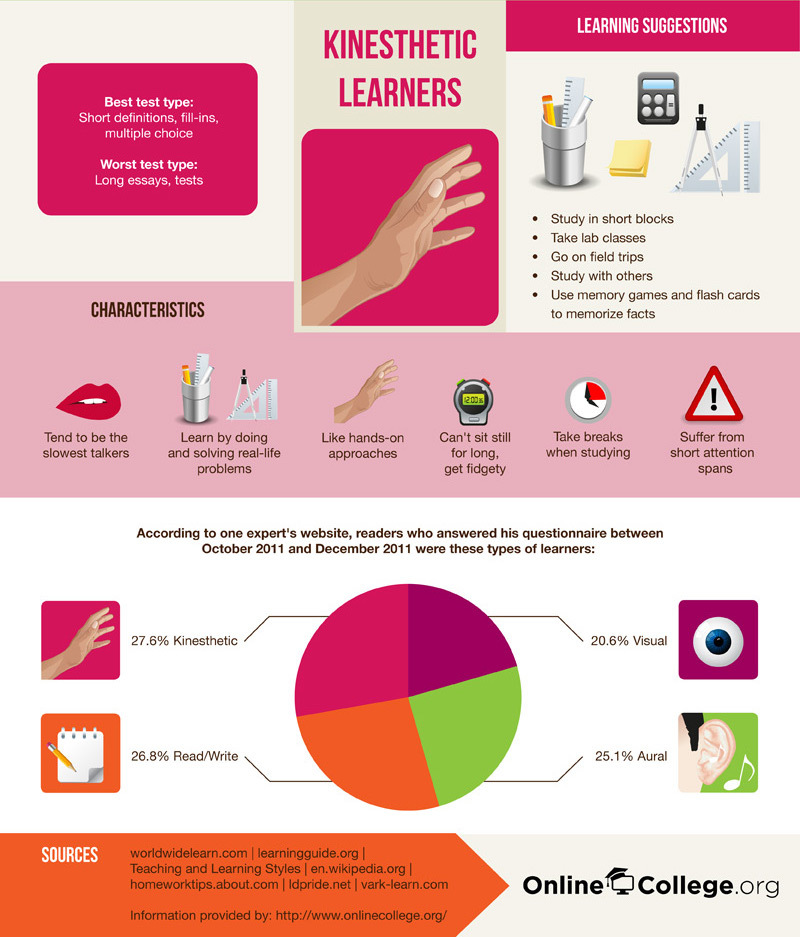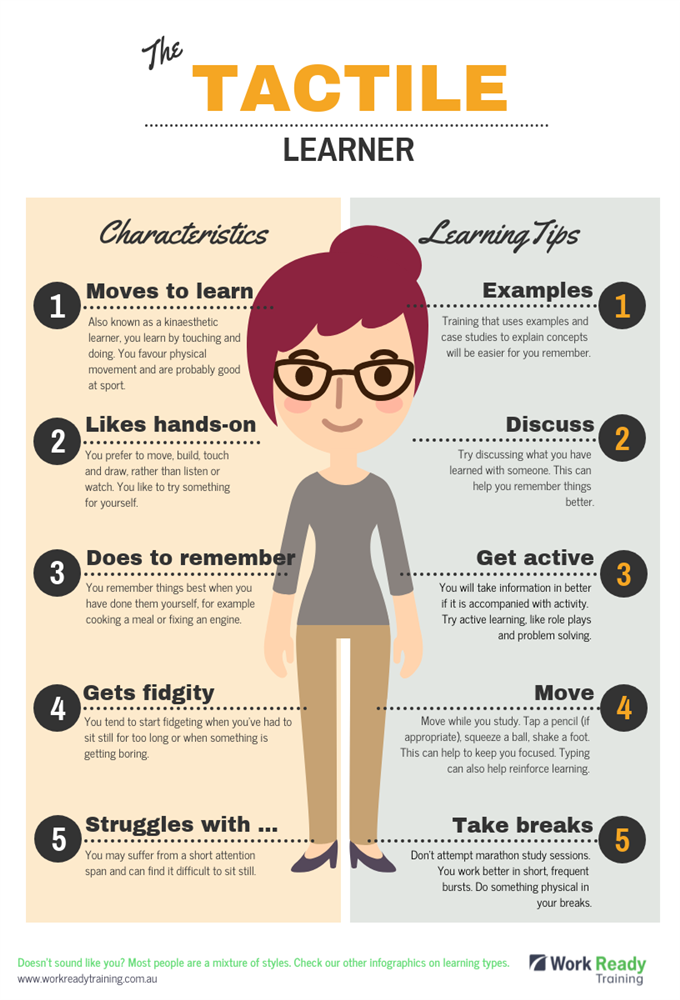e-Learning Ecologies MOOC’s Updates
Tactile Learning
The simplest definition of tactile learning is learning through touching or feeling. Of the primary learning styles, tactile learning is usually grouped with the Kinesthetic learning style.
Most sources use tactile learning and kinesthetic learning interchangeably. Kinestheticlearningstrategies.com states, "However, other theorists make a distinction between those with the kinesthetic learning style and tactile learners. They stress that kinesthetic learning has more to do with actually physically moving the large muscle groups of the body, as we do when walking, running, jumping, dancing and so on, whereas tactile learning, in their view, has to do with the actual sensation of touch on our skin."
In this week's lesson, Professor Cope mentions different modes of learning. He is paraphrased by mentioning tactile learners as needing to feel the object to learn about it and differentiating it from other modes of learning, including gesture learning. So, it might support the notion that tactile learning may be different from kinesthetic learning.
Tactile learners benefit from a learning environment that allows them to touch objects. Some examples of environments where tactile learners flourish are project-based learning, simulations, and hands-on learning. Some ways to help tactile learners excel are to let them play with items and fidget as they learn, give them a physical copy or model of the subject, and provide suggested locations where they might encounter the subject of discussion in action.
As Professor Cope mentions in the first week's lessons, technology might grant us affordances that we might not have had without it. This might be even truer in the area of tactile learning in the near future. With the advent of 3D printers, it is possible to recreate items quickly and efficiently. In the first week, Professor Gee mentions the ability to print anything in the near future. This opens limitless possibilities for the tactile learner. Not only would they be able to print any physical object they might be studying, but also models of microscopic objects, or models of concepts too grand to have displayed before.
https://www.forbes.com/sites/oracle/2020/06/29/in-tracking-covid-19-exposures-hr-leaders-find-trusty-tools-like-spreadsheets-fall-short/#318fed7d3efc
Resources:
https://en.wikipedia.org/wiki/Kinesthetic_learning#cite_note-6
https://learningabledkids.com/multi_sensory_training/page10-tactile1.htm
https://youtu.be/HddiTjwSYkQ
https://www.kinestheticlearningstrategies.com/kinesthetic-learner-vs-tactile-learners/
https://classroom.synonym.com/difference-between-tactile-kinesthetic-8083693.html
https://www.forbes.com/sites/oracle/2020/06/29/in-tracking-covid-19-exposures-hr-leaders-find-trusty-tools-like-spreadsheets-fall-short/#318fed7d3efc



